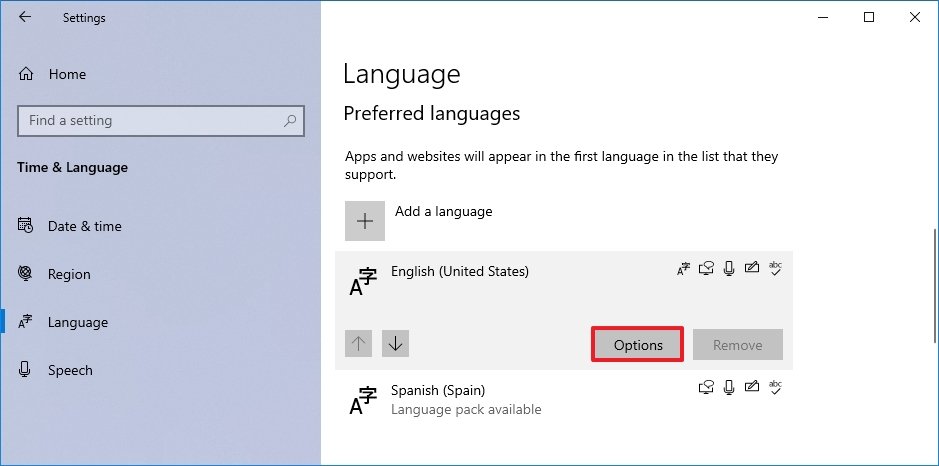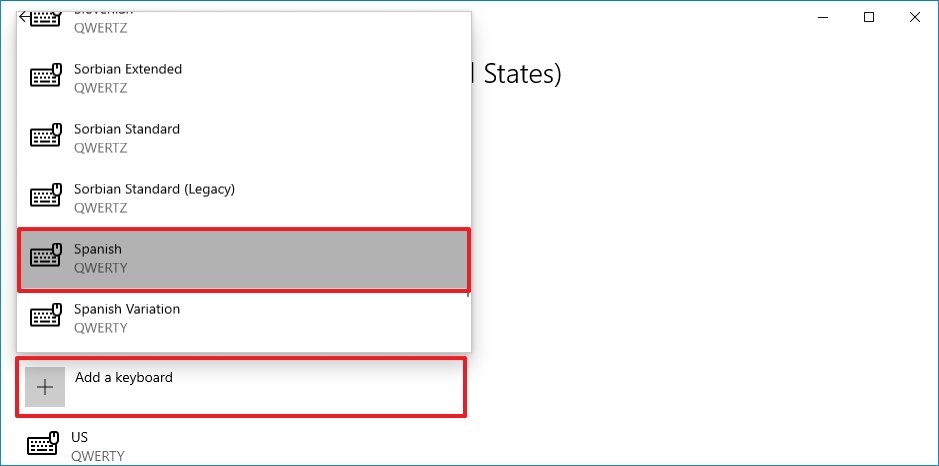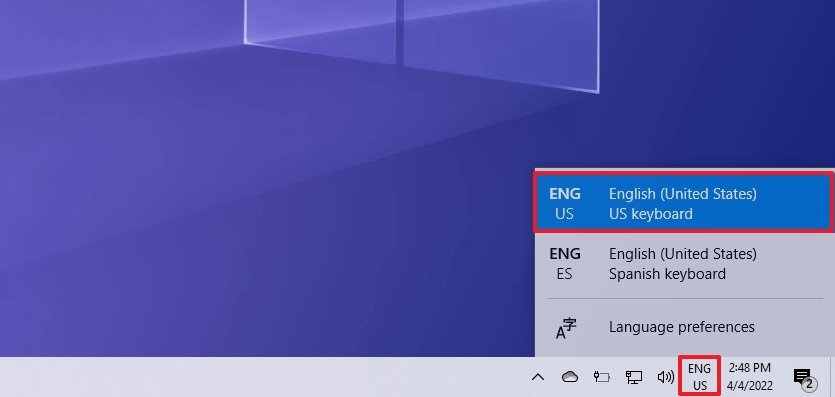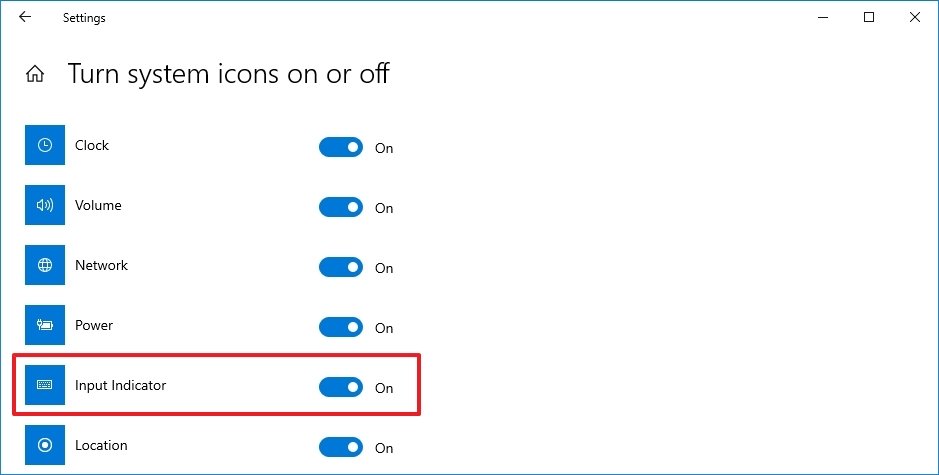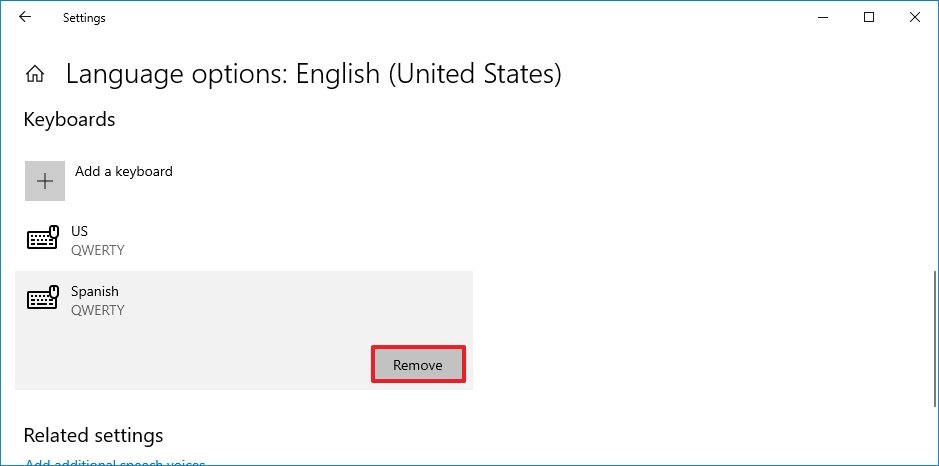Windows 10 prompts you to configure additional keyboard layouts during the initial setup. However, you can always add or remove layouts at any time if you didn’t choose the correct one or you have to type in another language.
Typically, it’s uncommon to change the input settings, but there many situations when you might need to. For instance, sometimes you may need to switch to the Spanish layout to write words that include special characters like “Ñ,” or prefer a different layout, such as the United States-Dvorak.
Regardless of the reason, Windows 10 ships with easy settings to add, remove, and change layouts for hardware and touch keyboards.
In this Windows 10 guide, we will walk you through the steps to add, change, and remove keyboard layouts in your current setup.
How to add keyboard layout on Windows 10
To add a new keyboard layout on Windows 10, use these steps:
- Open Settings.
- Click on Time & Language.
- Click on Language.
- Under the “Preferred languages” section, select the current default language (top in the list).
-
Click the Options button.
Source: Windows Central
- Under the “Keyboards” section, click the Add a keyboard button.
-
Select the new keyboard layout to add to Windows 10.
Source: Windows Central
- Repeat steps 6 and 7 to add more layouts.
Once you complete the steps, the new keyboard layout will be added to the device, and you can switch between them using the instructions below.
How to change keyboard layout on Windows 10
While changing layouts is straightforward, it’ll reconfigure some of the keyboard keys, which means some of the keys may print a different character depending on the layout.
To switch between keyboard layouts on Windows 10, use these steps:
- Click the Input Indicator icon in Taskbar (bottom right).
-
Select the new keyboard layout.
Source: Windows Central
- Repeat steps 1 and 2 to switch back to the default layout.
After you complete the steps, you can start typing with the new keyboard layout.
Enable Input Indicator
If the Input Indicator is not present in the Taskbar, you can enable it through the Settings app.
To enable the Input Indicator on Windows 10, use these steps:
- Open Settings.
- Click on Personalization.
- Click on Taskbar.
-
Under the “Notification area” section, click the Turn system icons on or off option.
Source: Windows Central
-
Turn on the Input Indicator toggle switch.
Source: Windows Central
Once you complete the steps, the icon will appear in the notification area of the Taskbar to access the layouts and switch between them. Alternatively, you can also use the Windows key + Spacebar keyboard shortcut to cycle between the available keyboard layouts more quickly.
How to remove keyboard layout on Windows 10
To remove a keyboard layout on Windows 10, use these steps:
- Open Settings.
- Click on Time & Language.
- Click on Language.
- Under the “Preferred languages” section, select the current default language (top in the list).
-
Click the Options button.
Source: Windows Central
- Under the “Keyboards” section, select the keyboard to remove from the list.
-
Click the Remove button.
Source: Windows Central
- Repeat steps 6 and 7 to remove additional layouts.
Once you complete the steps, the keyboard layout will be removed from the device.
More Windows resources
For more helpful articles, coverage, and answers to common questions about Windows 10 and Windows 11, visit the following resources:

On this week’s podcast … We recap the Windows 11 event, and more!
We’re back with another exciting episode of the Windows Central Podcast, and this week, we report on Microsoft’s hybrid work event, new builds of Windows 11, and the possibility of putting Android on Surface Neo. There’s also a new name and look for Microsoft’s Journal app, an interesting mini PC coming from Apcsilmic, and more.

Microsoft’s Surface Duo 2 is now just $999 — its lowest price ever
We have some good news if you’re on the fence about Microsoft’s Surface Duo 2 due to the high price. Both Microsoft and Best Buy are now offering the dual-screen Android phone for $999 — a savings of $500 off the original price. Toss in a trade-in, and you can have it even cheaper.


